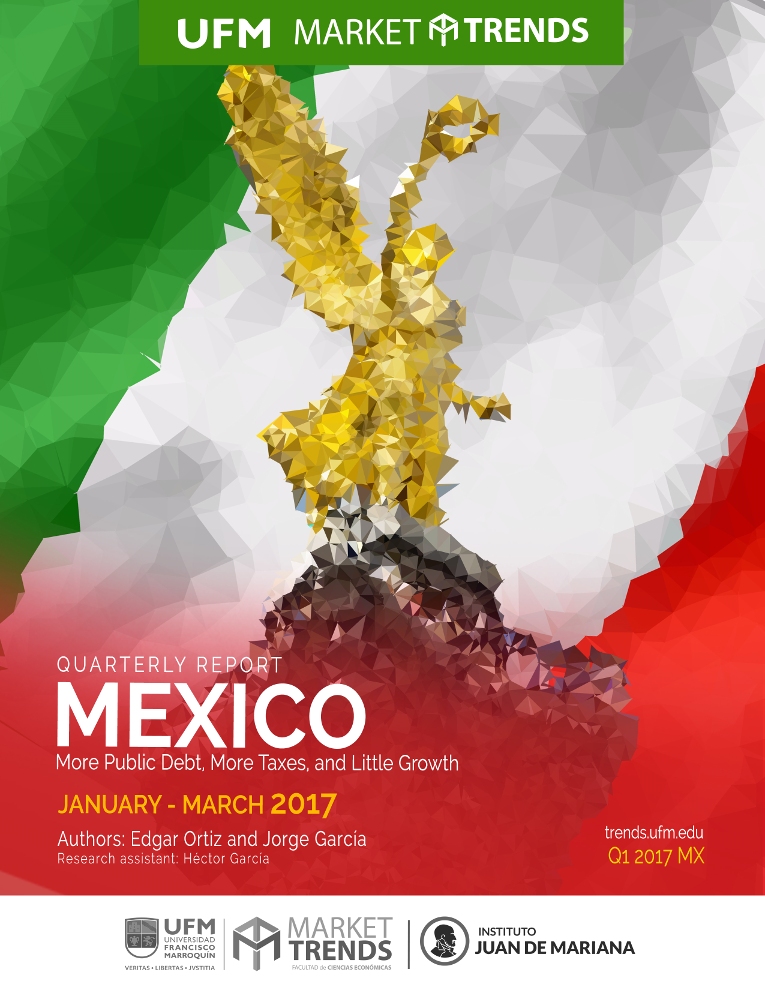There was some improvement of the Mexican economy in the last few months of 2016. Car sales closed at record levels, unemployment is low, and the Bank of Mexico attempted to bypass the Fed’s rate hikes, although without avoiding further depreciation.
What awaits Mexico? The country’s growth is not enough to generate the desired economic performance. Inflation threatens to return as the impact of the peso’s depreciation has been transferred to the Producer Price Index. The government managed to increase tax collection in the last three years, but the public debt has increased as a result of the fall in oil prices. Mexico’s economy has more pending subjects to solve than achievements to boast about.
Contents
- Gross domestic product (GDP)
- Cyclical sector demand
- Employment trends
- Monetary aggregates
- Consumer Price Index (CPI)
- Producer Price Index (IPP)
- Stock Market Prices
- Credit to businesses
- Household credit
- Government credit
- Yield curve spread
- Deficit and debt of GDP
- Balance of payments
Authors
- Edgar Ortiz Romero
Edgar Ortiz has a degree in Law from the Francisco Marroquín University. He holds a master in Austrian Economics at the Rey Juan Carlos University in Madrid. He is the executive director of the Center of Economic and Social Studies (CEES). He is a professor of economics at the Francisco Marroquín University, and he is also an analyst on issues related to the situation at Canal Antigua. He works as an associate lawyer at Estudio Jurídico Rivera.
- Jorge Eduardo García
Jorge is currently completing the second grade of Economics with minor in Finance at the Universidad Francisco Marroquín. He has attended to international seminars from Foundation for Economic Education. He is research intern on Centro de Estudios Económico-Sociales (CEES) and also has collaborated in experiments on Centro Vernon Smith of Experimental economics in UFM.



